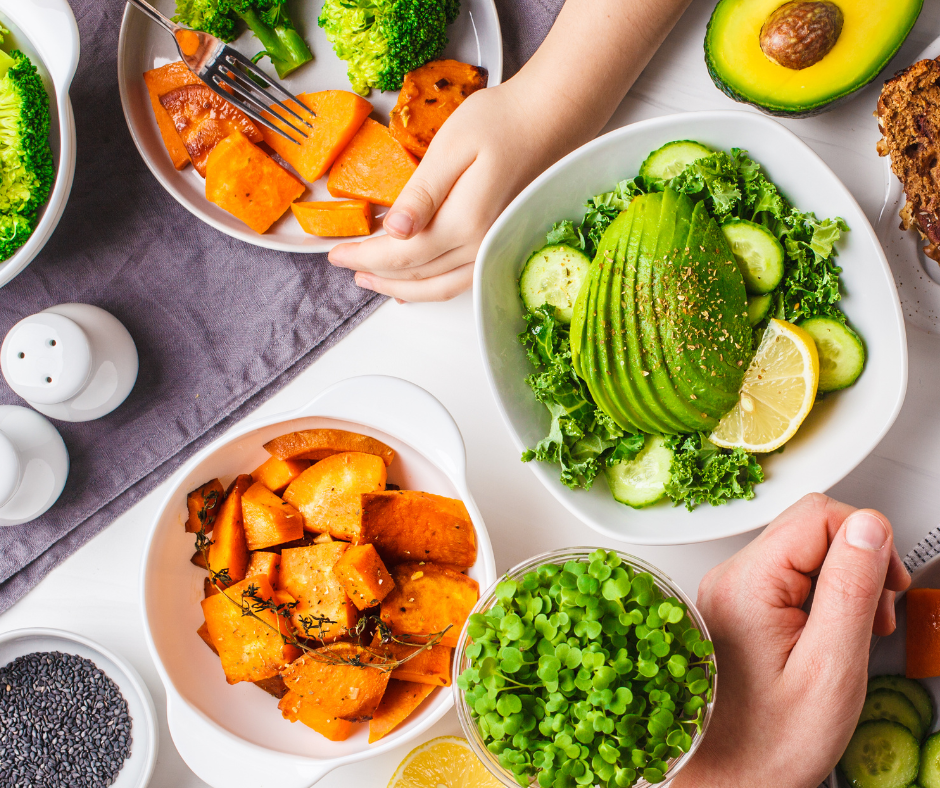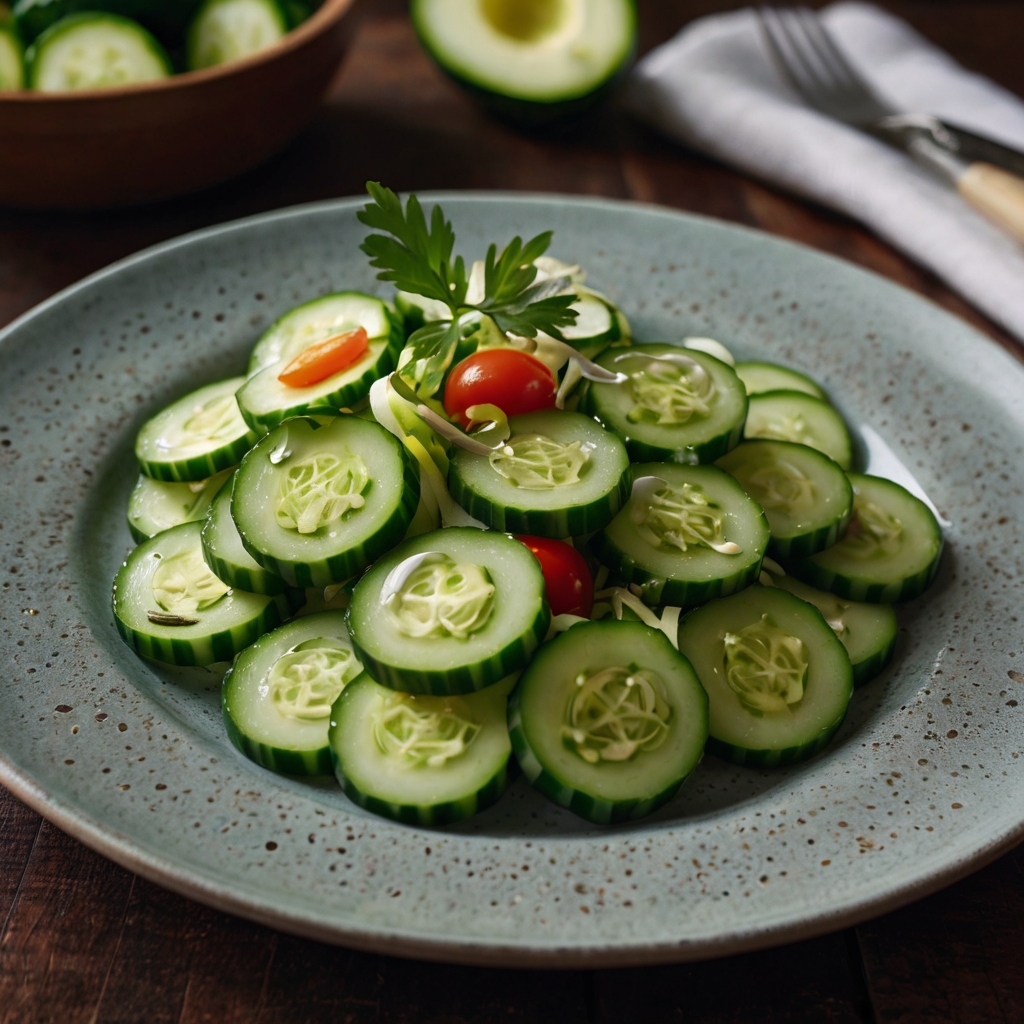Building muscle isn’t just about lifting heavy weights—it’s about fueling your body with the right nutrition. A well-structured meal plan can make all the difference, ensuring you get the protein, carbs, and fats needed to grow and recover. Plus, it saves time, eliminates guesswork, and keeps you consistent, which is key for real results. A well-balanced Meal Plan for Muscle Gain helps you build strength and achieve your fitness goals efficiently.Whether you’re new to meal planning or looking to fine-tune your approach, understanding the basics is the first step to crushing your fitness goals.
Understanding Muscle Gain Nutrition
Building muscle is as much about what you put on your plate as it is about what you do in the gym. Your nutrition acts as the fuel and raw material your body needs to repair tissues, grow muscle, and power through workouts. To make gains effectively, you need to tackle a few cornerstone topics: calories, macronutrients, micronutrients, and hydration. Let’s break it down.
The Role of Calories in Muscle Growth
To gain muscle, your body needs a caloric surplus. This means consuming more calories than your body burns daily. Why? Because your body needs that extra energy to repair and build muscle tissue. But don’t just eat aimlessly—calculating your caloric needs ensures you’re working smarter, not harder.
To start, determine your Basal Metabolic Rate (BMR)—the calories your body needs at rest to maintain basic functions like breathing and digestion. Then, multiply your BMR by an activity factor based on how active you are. Adding a 10-20% caloric surplus (depending on your goals and experience) gives your daily intake for muscle growth.
For more details, check out How Many Calories Should I Eat to Gain Muscle?. It’s a handy guide to fine-tune your numbers.
Macronutrient Breakdown for Muscle Gain
Calories are the foundation, but it’s the macronutrient distribution that determines how those calories benefit your gains. Here’s what the balance should look like for muscle growth:
- Protein: Aim for 1.6-2.2 grams per kilogram of body weight daily to fuel muscle repair and growth. Protein-rich foods like chicken, fish, eggs, and plant-based options like lentils are essential.
- Carbohydrates: About 40-50% of your caloric intake should come from carbs. They provide the energy needed for intense workouts and aid recovery.
- Fats: Roughly 20-30% of your intake should be healthy fats. These support hormone production, including the ones vital for muscle growth, like testosterone.
A common ratio to start with is 40% carbs, 30% protein, and 30% fats, though individual needs may vary. For a deeper dive, check out the Best Macro Ratio for Muscle Gain.
Importance of Micronutrients
When it comes to muscle building, micronutrients often get overlooked—but they’re critical. Minerals like magnesium and potassium support muscle contraction and relaxation, while vitamins like D and E play a role in recovery and energy production.
Key micronutrients for muscle builders include:
- Magnesium: Helps with muscle relaxation and reduces cramps.
- Potassium: Keeps your muscles hydrated and functioning efficiently.
- Iron: Carries oxygen to muscles, enhancing performance.
Learn more about micronutrients and their role in muscle growth at Micros to Build and Maintain Muscle. Ensuring you’re not deficient in these is like giving your car a full tank of high-grade fuel.
Hydration and Muscle Performance
Hydration isn’t just for marathon runners—it’s crucial for anyone looking to pack on muscle. Dehydration impairs muscle contractions, reduces strength, and slows recovery. Muscles are about 75% water, so keeping them hydrated ensures they work optimally.
How much water should you drink? Aim for at least 3 liters per day as a baseline, and increase it on workout days. A simple trick is to check the color of your urine—clear to light yellow means you’re well-hydrated.
Explore the science of hydration and muscle performance at The Importance of Muscle Hydration. A hydrated muscle performs like a well-oiled machine.

Photo by Tima Miroshnichenko
By mastering calories, balancing macros, paying attention to micronutrients, and staying hydrated, your muscle gain nutrition will be on point.
Want an easy way to hit your daily protein goals? Check out our guide on How to Eat 100g of Protein Every Day: Affordable High-Protein Meals Under $5!
Steps to Create an Effective Muscle Gain Meal Plan
Building muscle requires more than just rigorous gym workouts; it’s about fueling your body purposefully. A good meal plan ensures you’re consuming the right nutrients in the right amounts, tailored to your individual needs. Whether you’re just starting or looking to refine your approach, these steps will help you build a plan that works.
Setting Realistic Goals
Achieving your muscle gain goals starts with understanding your body. Factor in your current physique, metabolism, and activity level when setting targets. Unrealistic goals can lead to frustration, so aim for something attainable, like gaining 0.5-1 pound of muscle per week.
If you’re unsure where to start, use tools such as body composition scales or consult a fitness coach for expert advice. Remember, your goals should be measurable and specific, not vague ambitions. For more practical tips, check out this guide on setting realistic goals.
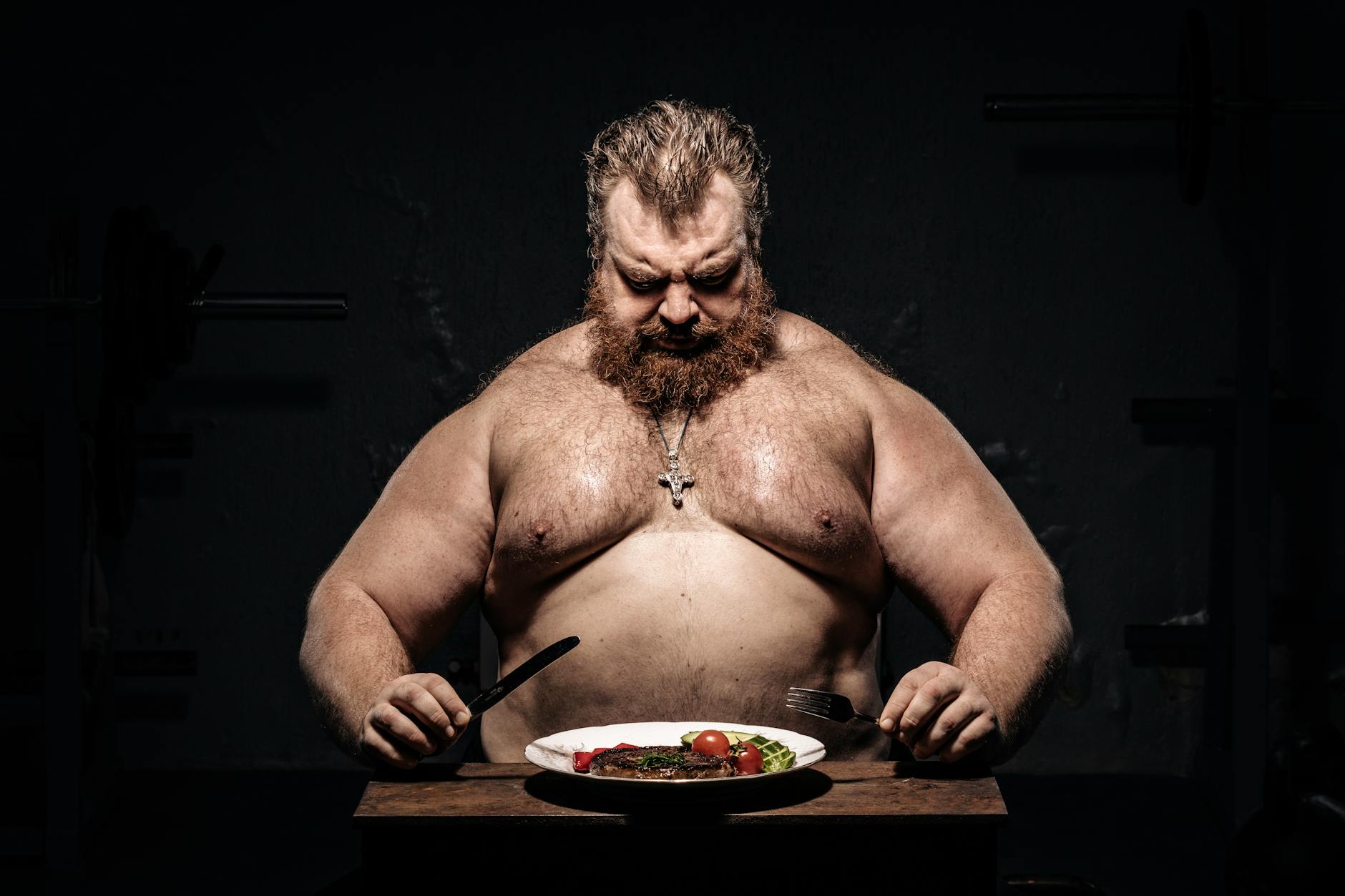
Photo by Alexa Popovich
Tracking Caloric and Macronutrient Intake
Accurately tracking your calorie and macronutrient intake is essential. Apps like MyFitnessPal or Cronometer can make the process easier by providing detailed breakdowns of your meals. Aim for a caloric surplus if muscle gain is your goal, and maintain a balanced macronutrient ratio of 40% carbs, 30% protein, and 30% fats, though individual needs may vary.
Here’s the trick: consistency matters. Track daily to identify any gaps in your nutrition. Precision in logging your food can make or break your progress.
Meal Timing and Frequency
When it comes to meal timing, think of your body as a machine that requires consistent fueling. Spread your meals across 4-6 smaller portions throughout the day to maintain energy levels and optimize muscle repair.
- Pre-workout meals: Focus on carbs and some protein to fuel your exercise.
- Post-workout meals: Include fast-digesting protein and carbs to jumpstart recovery.
For example, a banana with a protein shake post-exercise can make a significant difference in muscle repair.
Planning and Prepping Meals
Meal prepping is your secret weapon for staying consistent. Dedicate a few hours each week to prepare and portion your meals. This not only saves time but also prevents you from reaching for unhealthy snack options.
Here’s how to make preparation easier:
- Grocery shop smart: Stick to nutrient-rich staples like lean protein, whole carbs, and healthy fats.
- Invest in meal containers: They help you portion and store meals efficiently.
- Batch cook: Roasting chicken or steaming veggies in bulk minimizes daily stress.
Explore sample meal plans like this 7-day guide to get started.
Adjusting the Plan as Needed
Your meal plan isn’t set in stone. Regularly assess your progress and make changes when required. Are you hitting a plateau? It might be time to tweak your calorie intake or macronutrient distribution.
Listen to your body. If you’re feeling sluggish during workouts or not seeing results, those are cues to reevaluate. Whether that means introducing more carbs or diversifying your protein sources, stay flexible.
Building a meal plan isn’t a one-and-done process; it’s all about consistency, reflection, and adaptation.
Best Foods for Muscle Growth
Eating the right foods is essential for building muscle. Your body needs a healthy mix of protein, carbohydrates, fats, vitamins, and minerals to recover and grow after workouts. Below, we break down the best foods you can include in your meal plan for effective muscle gain.
High-Protein Foods
Protein is the building block of muscle tissue. Without it, your body cannot repair and grow stronger after your workouts. Both animal and plant-based options can meet your protein needs:
- Chicken breast: A lean protein option that’s rich in amino acids.
- Eggs: Packed with protein and essential nutrients like choline.
- Fish: Options like salmon and tuna provide protein and omega-3 fatty acids, which reduce muscle inflammation.
- Tofu and tempeh: Perfect for plant-based diets, offering high-quality protein.
- Legumes: Beans, lentils, and chickpeas are excellent sources of protein and fiber.
For a broader list of high-protein foods, check out this guide.
Complex Carbohydrates
Carbs often get a bad reputation, but they’re vital for muscle growth. They supply the energy needed for intense workouts and help replenish glycogen stores for recovery. Great sources include:
- Sweet potatoes: A nutrient-dense carbohydrate that’s rich in vitamins.
- Oats: Slow-digesting carbs that fuel your body throughout the day.
- Quinoa: A complete protein and healthy carb in one.
- Whole grains: Brown rice, whole wheat bread, and barley contribute essential minerals and fiber.
Focus on complex carbs to maintain steady energy levels instead of spikes associated with simple sugars. Learn more about muscle-friendly carb options here.
Healthy Fats
Fats are often misunderstood, but the right types of fat play a big role in muscle gain. They help regulate hormones like testosterone and provide a dense calorie source for those needing an energy boost. Include:
- Avocados: Full of heart-healthy monounsaturated fats.
- Nuts: Almonds, walnuts, and cashews offer healthy fats and protein.
- Seeds: Options like chia and flaxseeds are rich in omega-3s.
- Olive oil: A versatile fat to use in cooking or as a salad dressing.
Balancing fats in your diet supports both your caloric needs and overall health.
Fruits and Vegetables
Muscle growth isn’t just about macronutrients; you also need plenty of vitamins, minerals, and antioxidants to support recovery and maintain overall health. Incorporate a variety of these to meet daily requirements:
- Berries: High in antioxidants to fight oxidative stress.
- Leafy greens: Spinach and kale are nutrient powerhouses loaded with iron and magnesium.
- Bananas: Excellent for replenishing electrolytes after a tough workout.
- Bell peppers: Vitamin C-rich vegetables that support your immune system.
Eating a colorful array of fruits and veggies ensures you’re getting a range of essential nutrients your body needs to thrive.
 Photo by Harsh Photographer
Photo by Harsh Photographer
Supplements for Muscle Gain
Supplements can enhance your progress when used alongside a well-rounded diet. While not absolutely necessary, they can help fill any gaps or optimize your nutrition for muscle building:
- Whey Protein: A quick and easy way to meet your daily protein goals, especially after workouts.
- Creatine: Known for improving strength and muscle performance during high-intensity workouts.
- BCAAs: Support muscle recovery and reduce soreness post-exercise.
Always consult with a healthcare professional before starting any supplement. For more insight into muscle-building supplements, check out this in-depth guide.
By incorporating these foods and supplements into your meal plan, you’ll give your body all the tools it needs to build muscle effectively.
Common Challenges and How to Overcome Them
When it comes to meal planning for muscle gain, staying consistent and motivated are key. But let’s be real: life isn’t always smooth sailing. From packed schedules to financial limitations, there are plenty of hurdles. Don’t worry—these challenges are manageable with a bit of strategic planning and a flexible mindset. Let’s break them down and tackle them head-on.
Dealing with Busy Schedules
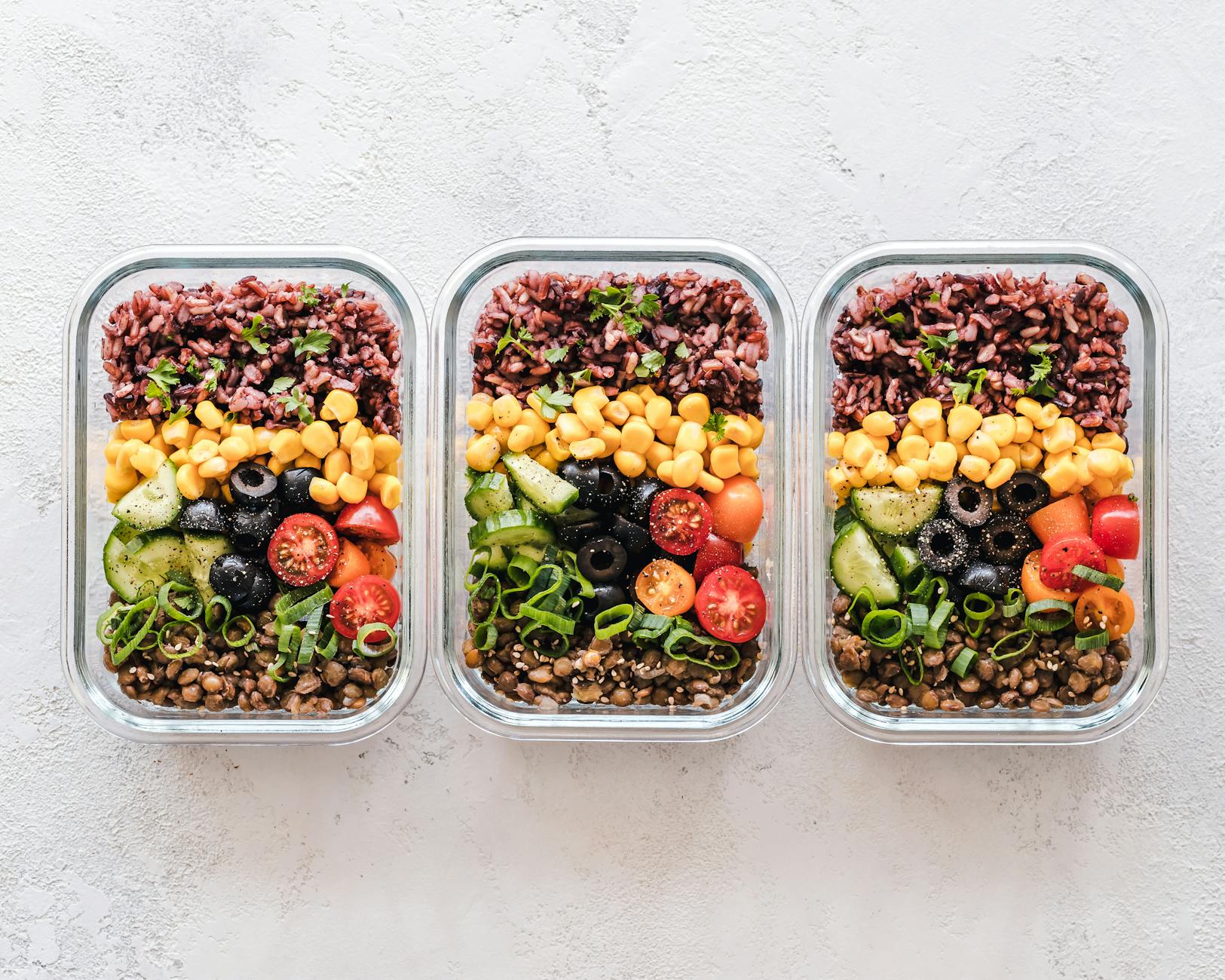
Photo by Ella Olsson
Time is often the biggest barrier to sticking to a meal plan, but you don’t have to sacrifice results just because your calendar is packed. Here are a few time-saving strategies that can help:
- Batch cook once a week: Dedicate a couple of hours on the weekend to cook your proteins, carbs, and veggies in bulk. Divide them into meal containers for the week ahead.
- Use pre-cooked, high-protein options: Rotisserie chicken, canned tuna, or pre-packaged boiled eggs are lifesavers when you’re short on time.
- Leverage kitchen tools: A slow cooker or air fryer can help prepare meals with minimal hands-on effort while you’re busy with other tasks.
The goal isn’t to add stress but to simplify your week. Even something as simple as preparing protein-rich snacks ahead—like boiled eggs or a handful of almonds—can keep you on track. For more helpful meal prep tips, check out the 10 Pro Meal Prep Tips for Muscle Gain.
Managing Meal Boredom
Meal prep can feel tedious if you’re eating the same dry chicken and rice every day. But boredom doesn’t mean you should abandon your plan—it’s a sign you need to mix things up. Here’s how to keep your meals exciting:
- Rotate your spices and sauces: One protein, like chicken, can taste completely different with Italian seasoning one day and a tangy barbecue sauce the next.
- Try theme nights: Think taco Tuesdays with ground turkey or stir-fry Fridays with beef and broccoli.
- Experiment with different cuisines: Explore recipes from cultures that emphasize whole foods and bold flavors, like Mediterranean or Asian dishes.
- Add variety through sides: Alternate between nutrient-dense options like sweet potatoes, quinoa, or roasted veggies to prevent monotony.
If you’re stuck, platforms like Pinterest or fitness recipe blogs are goldmines for inspiration. Looking for more ideas? Here’s a great guide on How Fitness Enthusiasts Add Variety to Meal Planning.
Sticking to a Budget
High-protein diets can get expensive, but you don’t need to break the bank to fuel your muscle gain journey. Here are some tips to make meal planning affordable without sacrificing quality:
- Shop in bulk: Stores like Costco sell chicken, eggs, oats, and other staples in large quantities at a lower cost.
- Opt for cost-effective proteins: Ground turkey, canned beans, eggs, and lentils are budget-friendly alternatives to pricier cuts of meat and fish.
- Prioritize frozen options: Frozen fruits and vegetables are just as nutrient-dense as fresh, but they cost less and have a longer shelf life.
- Plan based on what’s on sale: Check weekly grocery ads and plan your meals around discounted items.
Budgeting doesn’t mean compromising on nutrition—it’s about getting creative and resourceful. For more detailed advice, you may find this article on Meal Planning Solutions useful for overcoming cost challenges.
By identifying these common challenges and adopting these strategies, sticking to your muscle gain meal plan will become much easier and more enjoyable.
Sample Weekly Meal Plan for Muscle Gain
When you’re focused on building muscle, a structured and nutrient-packed meal plan can simplify the process and keep you on track. Consistency is as important as the plan itself. Below is an example of a week-long meal plan, followed by tips to adjust it according to your specific needs.
Day-by-Day Example Menu
Here’s a full breakdown of sample meals for an entire week. Each day includes breakfast, lunch, dinner, and snacks, designed to provide balanced macronutrients that promote optimal muscle gain.
Monday
- Breakfast: 4 scrambled eggs, 1 slice of whole-grain toast, 1/2 an avocado, and a small serving of mixed berries.
- Snack: Greek yogurt topped with mixed nuts and honey.
- Lunch: Grilled chicken breast (6 oz), quinoa (1/2 cup cooked), and steamed broccoli (1 cup).
- Snack: Protein shake (made with whey protein, almond milk, and a banana).
- Dinner: Salmon (5-6 oz) with roasted sweet potatoes (1 cup) and asparagus.
Tuesday
- Breakfast: Protein pancakes with almond butter and a handful of strawberries.
- Snack: Low-fat cottage cheese with sliced pineapple.
- Lunch: Turkey burger (no bun) with mixed greens and a baked white potato.
- Snack: Apple slices with peanut butter.
- Dinner: Sautéed shrimp (6 oz), wild rice (1/2 cup cooked), and green beans.
Wednesday
- Breakfast: Oatmeal made with almond milk, topped with 1 tablespoon of chia seeds and blueberries.
- Snack: Handful of almonds and a hard-boiled egg.
- Lunch: Baked tilapia (6 oz), couscous (1/2 cup cooked), and a side salad with olive oil dressing.
- Snack: Protein bar or jerky for convenient protein.
- Dinner: Beef stir fry (5 oz lean beef) with mixed vegetables and brown rice.
Thursday
- Breakfast: 3 scrambled whole eggs mixed with spinach, side of sliced avocado, and a small orange.
- Snack: Handful of walnuts and a hard-boiled egg.
- Lunch: Grilled steak (6 oz) with mashed sweet potatoes and sautéed zucchini.
- Snack: Protein smoothie with frozen mixed berries, almond milk, and whey protein isolate.
- Dinner: Lemon baked chicken thighs (5 oz) with quinoa and steamed green beans.
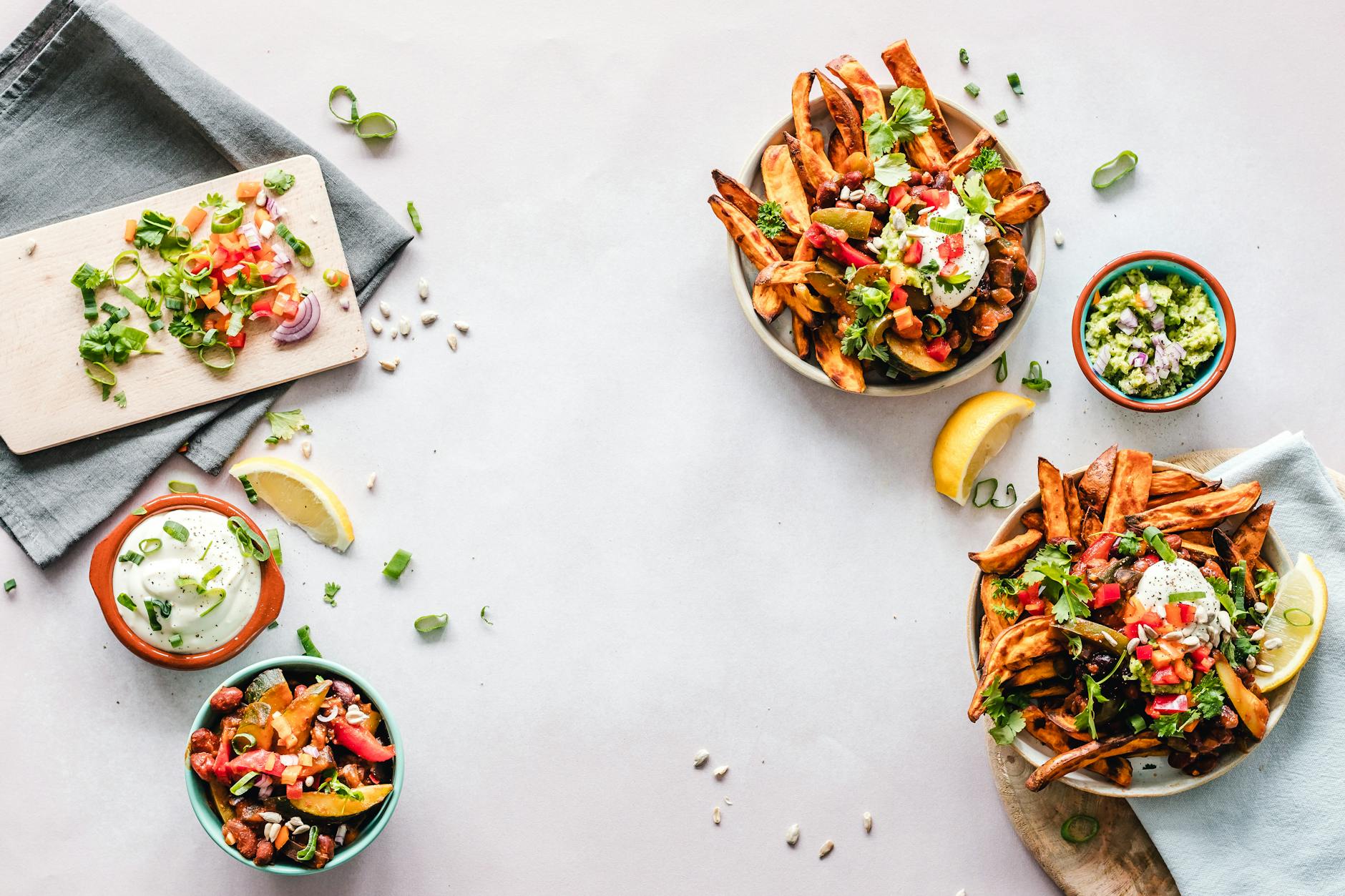
Photo by Ella Olsson
Friday
- Breakfast: 3 whole eggs with sautéed mushrooms, tomatoes, and onions on the side.
- Snack: Greek yogurt with granola and flaxseeds.
- Lunch: Grilled chicken (6 oz) over a spinach salad with walnuts, dried cranberries, and balsamic dressing.
- Snack: Rice cakes topped with almond butter and banana slices.
- Dinner: Grilled tuna steak with roasted Brussels sprouts and quinoa.
Saturday
- Breakfast: Protein smoothie with almond milk, spinach, strawberries, and whey protein.
- Snack: Trail mix (a mix of nuts, seeds, and raisins).
- Lunch: Baked salmon (5 oz) with a side of brown rice and grilled vegetables.
- Snack: Cottage cheese with sliced peaches or fresh melon.
- Dinner: Ground turkey taco bowl with quinoa, diced tomatoes, and avocado.
Sunday
- Breakfast: Omelet with 3 eggs, spinach, mushrooms, and cheddar cheese, served with whole-grain toast.
- Snack: Raw veggies (like carrots and celery) with hummus.
- Lunch: Grilled chicken wrap in a whole-grain tortilla with spinach and avocado.
- Snack: Hard-boiled egg with a handful of mixed nuts.
- Dinner: Baked cod with a side of mashed sweet potatoes and steamed asparagus.
For a deeper dive into planning muscle-building meals, explore this handy guide.
Customizing the Meal Plan
Everyone’s nutritional needs are different, and customization is key to making this sample plan truly work for you. Here’s how you can tailor it:
- Adjust Calorie Intake: If you’re not gaining muscle, add more calories. Increasing portion sizes of protein or carbohydrate-rich foods like rice or potatoes can help.
- Modify Macronutrient Ratios: Depending on your fitness goals, play with your carb, protein, and fat ratios. For example, start with a 40/30/30 split, then tweak it based on your results. A tool like Gaintrain can help you calculate your ideal macronutrient needs.
- Incorporate Personal Preferences: Swap meals or ingredients based on your palate and dietary restrictions. Don’t like fish? Use chicken instead. Prefer tofu? Replace meat with plant-based proteins.
- Plan Around Your Schedule: If you’re short on time, focus on quick recipes or meal-prep options.
- Track and Reassess: Use apps like MyFitnessPal to log your intake and see if it’s working for you. Plateaus are normal—be ready to adapt.
For more help building a plan that suits your unique needs, check out 7-Day Muscle Gain Meal Plan: Recipes & Prep.
Conclusion
A solid meal plan is the backbone of muscle growth. By understanding your nutritional needs, tracking what you eat, and staying consistent, you set yourself up for progress you can see and feel.
Don’t get stuck chasing perfection. Focus on building a routine that works for your lifestyle and adjust as needed. Muscle gain isn’t a quick fix—it’s a long-term commitment that rewards consistency and effort.
It’s time to take action. Start planning your meals, tracking your intake, and fine-tuning along the way. You’ve got the tools—now go put them to work.

